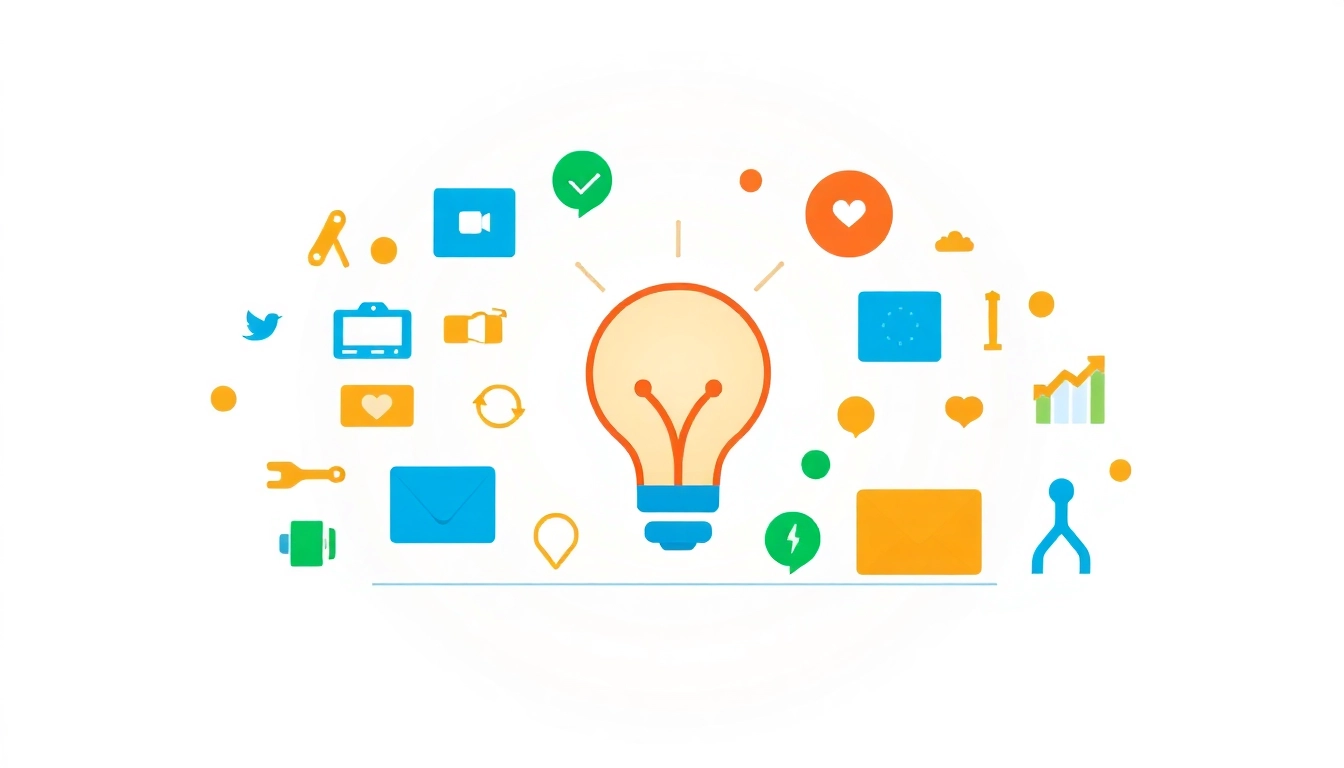Understanding Icons: Definition and Importance
What are Icons?
Icons are graphical representations or symbols designed to convey information quickly and efficiently. They serve as visual shorthand, allowing users to grasp concepts or functions without the need for extensive textual explanations. In various contexts—from website navigation to mobile applications—icons play a crucial role in enhancing user experience by providing intuitive guidance.
The Role of Icons in Design
In design, icons are not merely decorative elements; they are functional components that bridge communication gaps. They enhance usability by helping to categorize information, guide user interactions, and improve navigation. Well-designed icons can significantly bolster the overall aesthetic appeal of a project while ensuring clarity and effectiveness. According to a study on user interface design, the integration of icons leads to improved user satisfaction and reduced cognitive load.
Types of Icons and Their Uses
Icons can be categorized into various types based on their functions and visual styles:
- Action Icons: These indicate specific actions, such as edit, delete, or save functions.
- Navigation Icons: Used to assist users in navigating through a system or website (e.g., home, back, forward).
- Social Media Icons: Representing various social platforms, these icons facilitate sharing and linking.
- Status Icons: Indicating the status of items, such as online/offline or active/inactive.
- Brand Icons: Logos or symbols that represent a brand or product. These icons are crucial for brand recognition.
Designing Effective Icons
Principles of Icon Design
Creating effective icons requires adherence to several key principles:
- Simplicity: Effective icons should be simple and easily recognizable to enhance clarity and memorability.
- Consistency: Icons should maintain a consistent style throughout a project to establish visual harmony.
- Scalability: Icons must remain recognizable at various sizes, ensuring functionality across different devices.
- Contextual Relevance: Symbols should be contextually appropriate to the function they represent, helping users make quick connections.
Tools and Software for Icon Creation
Designing icons requires the right tools to bring creative visions to life. Some popular options include:
- Adobe Illustrator: Industry standard for vector graphics, allowing designers to create scalable icons.
- Sketch: A web-based design tool perfect for creating icons, especially for user interfaces.
- Figma: A collaborative interface design tool that enables real-time editing and icon creation.
- Inkscape: A free and open-source vector graphic editor that is great for beginners and experienced designers alike.
Color Theory in Icon Design
The choice of color in icon design transcends aesthetic appeal; it carries emotional and psychological weight that influences user interaction. Understanding color theory is essential for effective icon design:
- Color Wheel Principles: Familiarize yourself with complementary, analogous, and triadic color schemes to create balanced designs.
- Emotional Associations: Different colors evoke different emotions (e.g., blue can convey trust, while red can signal urgency).
- Accessibility Considerations: Ensure that color choices meet accessibility standards (e.g., contrast ratios), making icons legible to all users.
A Guide to Icon Formats and Applications
Understanding Different Icon Formats
Icons can be rendered in various formats, each with its unique strengths and weaknesses. The most common formats include:
- SVG (Scalable Vector Graphics): Ideal for web usage, includes scalable paths that render well across devices.
- PNG (Portable Network Graphics): Good for rasterized images; supports transparency but may lose quality when scaled.
- ICO: Commonly used for favicons, it supports multiple resolutions for different display contexts.
- EPS (Encapsulated PostScript): Vector format suitable for professional printing but may require specialized software to edit.
Choosing the Right Format for Your Project
Selecting the appropriate icon format depends on various factors, including usage context, quality requirements, and file size considerations. Here are guidelines for making the right choice:
- Web Projects: Opt for SVG for scalability, or PNG for simpler images that require transparency.
- Print Designs: Use EPS for high-quality renderings that need to scale without losing detail.
- Mobile Apps: Consider using vector formats to ensure icons remain sharp across different screen sizes.
Icons in Web vs. Print Design
The function of icons can differ significantly between web and print contexts. In web design, icons enhance navigation, support UI elements, and optimize user engagement. Similarly, in print design, icons can communicate ideas quickly but often lack interactive elements. Understanding these differences is crucial for effective design strategies.
Enhancing Brand Identity with Icons
Using Icons to Represent Your Brand
Icons play a pivotal role in establishing brand identity. A well-designed icon can encapsulate a brand’s values and mission while fostering recognition and loyalty. Successful brands utilize icons as a part of their branding strategy by ensuring that their icons reflect their core message and visual identity.
Case Studies: Brands That Utilize Icons Effectively
Several notable brands have successfully integrated icons into their identity:
- Apple: Known for its minimalist design, Apple’s iconography effectively communicates innovation and simplicity.
- Twitter: The bird icon represents freedom, communication, and informal engagement, echoing the platform’s values.
- Starbucks: Their iconic mermaid logo conveys a sense of warmth and familiarity while distinguishing the brand in a competitive market.
Best Practices for Brand Icons
To maximize the effectiveness of brand icons, consider the following best practices:
- Align Iconography with Brand Values: Ensure icons communicate the brand’s mission and ethics.
- Maintain Versatility: Design icons that can be adapted for various applications without losing impact.
- Conduct User Testing: Test icon designs with target audiences to gain insights into clarity, recognition, and emotional response.
Resources for Sourcing Icons
Free Icon Libraries and Resources
There are numerous platforms where designers can find free icons to use in their projects:
- Flaticon: Offers a vast database of free icons, including both static and animated options.
- Icons8: Provides a wide selection of icons in multiple formats with options for customization.
- The Noun Project: A robust repository of icons with thousands of unique designs contributed by global designers.
Paid Options for High-Quality Icons
For those seeking premium designs, several platforms offer high-quality icons for purchase, ensuring ownership and unique branding:
- Envato Elements: A subscription service providing access to thousands of premium icons and design resources.
- Creative Market: A marketplace where independent designers sell original icon sets tailored for various uses.
- Streamline Icons: Known for their unique, cohesive designs, Streamline offers extensive icon libraries for various applications.
Collaborating with Icon Designers
Working with professional icon designers can elevate the quality and relevance of your iconography. Here are tips for successful collaboration:
- Define Clear Objectives: Communicate the goals behind your icon designs, ensuring alignment with your overall branding strategy.
- Encourage Creativity: Allow designers the freedom to explore and propose designs based on their expertise.
- Feedback Loops: Establish regular intervals for constructive feedback throughout the design process to refine outcomes.



